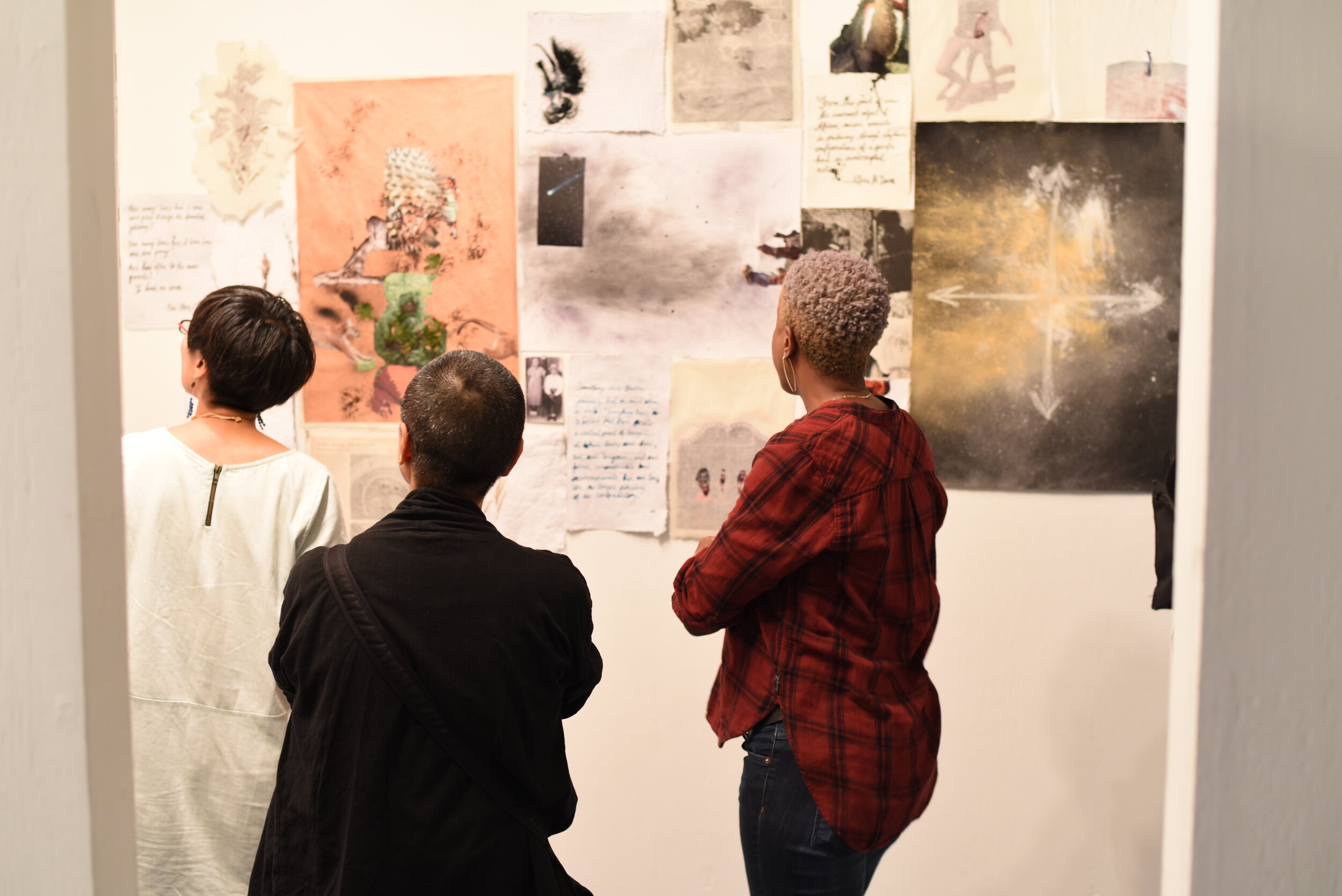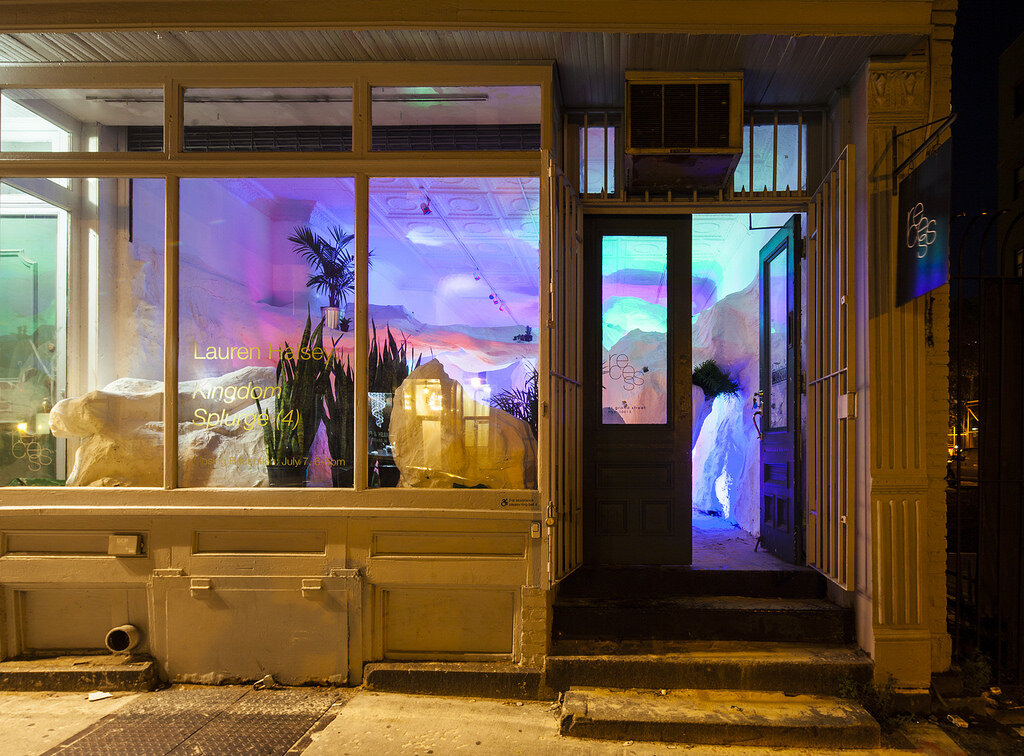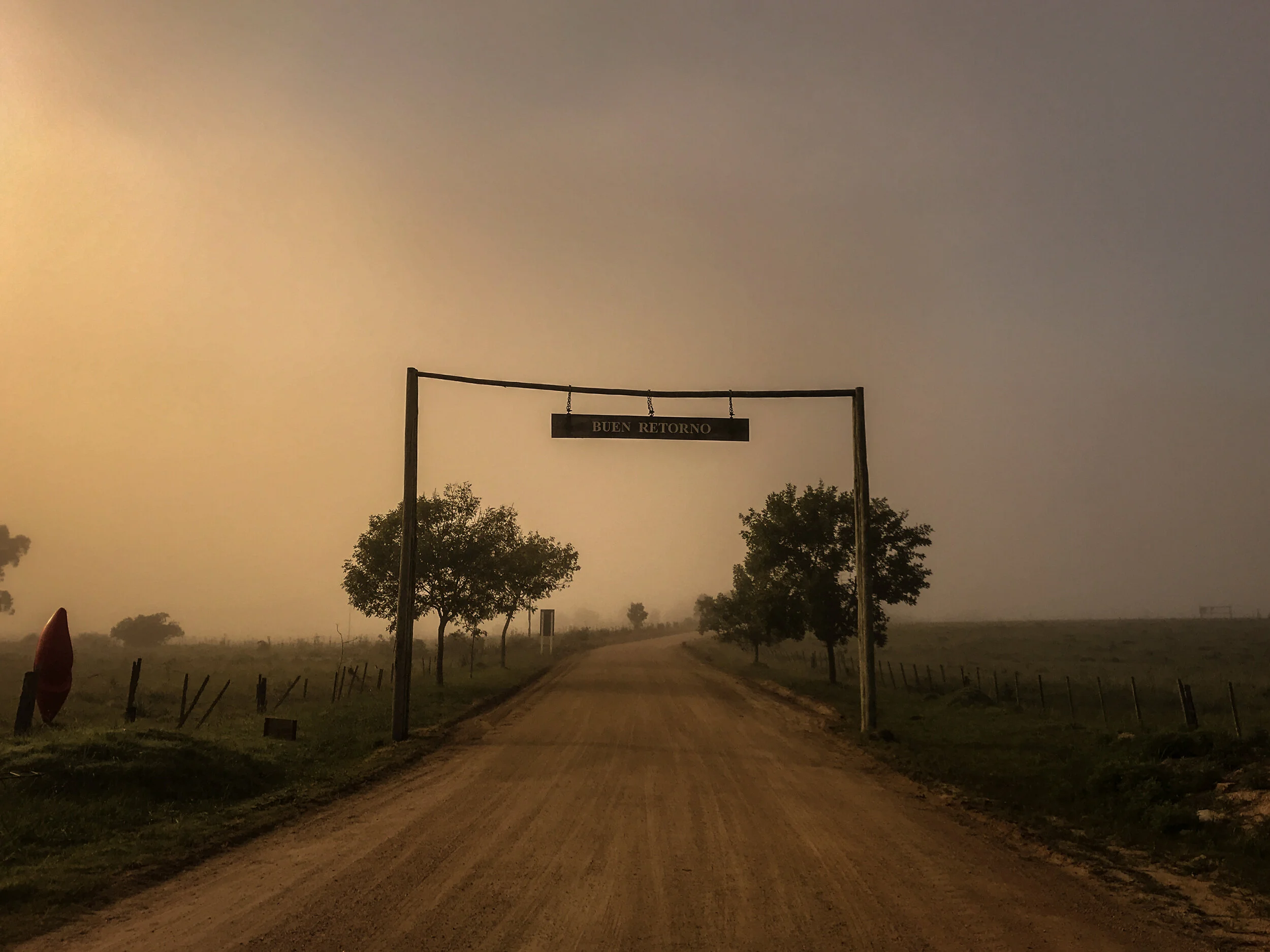The Visionaries Series: Bridgitt Evans of VIA Art Fund
“Contemporary art and activism have long been two sides of the same coin. ”
We find ourselves at a violent new intersection, this moment in America, a colliding and exploding of streets and stories, novel and familiar. Novel: COVID-19 sickening millions and killing over 100,000 in this country alone, 40 million jobless, front line workers pushed to their limits, small businesses struggling, economic outlooks dire //\\ intersecting with the appallingly familiar: systemic, too often murderous police brutality against black citizens, community rage and despair manifesting as organizing, protesting and rioting in cities across the country, a self-serving media circus, an ignorant, dangerous white house response. And in the center sits inequality, like a slow-leaking canister of tear gas.
Intersections are places of contemplation and choice. Which way to go, which destination to pursue? The choice may be easy - I’ll go toward the ice cream truck of course; or existential - I’ll risk my safety to march in the street where riot police could jail, injure or even kill me. We need guiding lights illuminating the way so that the choices become easier and the stakes more clear. The guiding lights are the visionaries of our communities to whom we turn for inspiration, direction and hope.
Dread Scott, Slave Rebellion Reenactment, New Orleans, 2019. VIA Incubator Grant recipient. Photo credit: Soul Brother.
Why Art Matters
Art encompasses all such intersections and, in times of crisis, provides a shared vocabulary for experience, trauma and fear. As the artist Christo, who died on May 31, said, “The work of art is a scream of freedom...”
But the production, exhibition and dissemination of art takes resources - resources our government fails to provide in any dependable, organized way. Into the intersection in question we could therefore add Donald Trump's constant threats to defund the National Endowment for the Arts, the National Endowment for the Humanities and the Institute of Museum and Library Services, as seen in his 2021 budget.
In the arts, true visionaries are needed now more than ever to challenge the status quo, catalyze change and make thought provoking art available to more people in more places.
Enter Bridgitt Evans.
“Artists’ role in society is highlighted in times such as these and we look to them to help us process these current events in the face of our shared humanity. ”
Visionary, Activist, Advocate
Led by a philosophy of curiosity, equity and social justice, Bridgitt Evans co-founded Visionary Initiatives in Art (VIA) in 2013, a donor-driven art fund which has since awarded just under 5 million in grants to artists, curators and arts organizations, and created a coalition of energized philanthropists across the US.
From the onset, Evans’s imperative was to empower VIA’s donors (known as partners) through direct engagement and education, to channel funding to often marginalized artists and arts organizations doing work as part of a broader cultural discourse. The larger, more complex and more public the project, the better. Evans’s vision is a world where the unique, impassioned voices of artists telling urgent stories can be experienced by the many, not the few.
Alicia Frankovich, Bisons, 2010 – , performance piece by Alicia Frankovich performed with Tehching Hsieh during Brooklyn Commons at the International Studio & Curatorial Program, New York, July 2016. VIA Incubator Grant recipient. Image courtesy of the artist.
Guided by her years of experience collecting contemporary art and working in real estate private equity, Evans created, along with her early partners, a new art funding model, a bottom-up approach based on donor agency and democratic decision making.
Jay Sanders of the Artists Space in New York has worked extensively with VIA. “I'm very impressed with the active intellectual work, research, and deep questing that I see taking place at VIA. In my dialogues with Bridgitt and the VIA team, it's clear that they very much care about the health of the whole ecosystem and fertility of artistic practice nationwide, and that they're actively asking themselves how they can tailor and expand their support to make meaningful change in our field. That tenacity stands out and their structure is very forward-thinking, allowing individuals to increase their philanthropic impact.”
VIA seeks to facilitate scale and reach. Often this means production of art which will be seen outside of museums or galleries, out in the world where it can meet people where they live. “We always want to consider - where will this be seen? Who will be able to see it and appreciate it? Cultural impact is very important,” Evans explains.
Three core principles guide VIA’s grant making decisions:
Artistic Production
Thought Leadership
Public Engagement
The three principles foster consistency and collaboration and are core to the loyalty of VIA’s 70+ partners. Margaret Erbe of Erbe Arts in London has been a member of VIA for many years. An art advisor and expert in the contemporary art market, Erbe values the principles as central to what she considers a “true partnership.” For her, “VIA’s three core principles provide clear, thoughtful criteria by which to evaluate potential grantees.”
VIA’s democratic approach can be seen in the types of funding it provides: Artistic Production Grants and Incubator Grants. Artists, curators, cultural organizations and biennials may submit grant proposals “for the production, exhibition, public dissemination and institutional acquisition of new works of art and ideas, with a particular emphasis on works mounted beyond traditional exhibition environments.”
“When thinking about VIA -the most gratifying and important part to me is that the grants go directly and immediately to the artist for the production of new work. Or, in the case of Incubator Grants, the funds go directly to small organizations for operating costs.” Erbe says.
Bottom-Up vs Top-Down
It’s interesting to consider the environment in which VIA took shape. In 2013, with Barack Obama in the White House and the stock market soaring, the art world saw many grand, ego-driven gestures. Take for example Leonard A. Lauder’s mega gift of 78 cubist masterpieces worth an estimated $1 billion, gifted to New York’s Metropolitan Museum of Art. While major gifts were nothing new and museums large and small still rely heavily on generous bequests from wealthy collectors, the top-down nature of such giving can have the effect of relegating fine art to a sort of rarified stratosphere and lending it an air of patrician exclusivity which threatens to intimidate inexperienced art goers and even alienate them altogether.
This type of giving remains common and necessary (think David Geffen’s recent gift of $100 million to the Museum of Modern Art in New York) but does not constitute the work of visionaries.
Bridgitt and her husband Bruce are no strangers to such large, generous gifts. They are in fact two of Boston’s most influential philanthropists. But VIA stands out for using the opposite approach. Simon Castets, Director of the Swiss Institute explains, “The success of VIA’s collective model points to the urgent need for increased collaboration and solidarity amongst all actors of the contemporary art world.”
Bridgitt Evans. photo credit, Sue Young
Crisis and Response
When the coronavirus shut down cities across the world and art institutions were forced to close their doors, a number of funds rushed to provide support to the arts. In contemplating what VIA could do, Evans asked the question of her partners, “How can we respond quickly and efficiently and thoughtfully in keeping with our philanthropic ethos?”
VIA decided to shrink the universe of possible recipients to those with whom they had worked before, those previously vetted; and also to focus on smaller non-profit organizations vulnerable to collapse due to the shutdown. On March 30, 2020, a date which falls in the middle of VIA’s normal grant cycle, the VIA partners met and agreed to distribute funds to prior Incubator Grant recipients. “We collectively decided we are not going to let these people down,” Evans said. The organization mobilized without hesitation.
Center for Afrofuturist Studies Visiting Artist Krista Franklin Exhibition. VIA Incubator Grant recipient. Photo credit: PS1.
In a matter of weeks, VIA was able to raise $224,000 from its partners-donors, and identify $100,000 capital to add from existing funds. This $342,000 in Emergency Relief Grants equaled twenty four $14,250 grants. The 24 recipients include 19 small arts nonprofits who received Incubator Grants from 2013 - 2018 and five organizations comprising the 2019 cohort of the VIA | Wagner Incubator Grant Fund.
Megan Steinman, Director of The Underground Museum
“When Bridgitt told us that The Underground Museum was going to receive VIA's Emergency Relief Grant, (The UM's co-founder) Karon Davis and I broke into tears. Museums of our scale are always working so hard to gather funds. The economic crisis brought on by the COVID-19 pandemic had put that hustle into overdrive. VIA stepped forward and said, "we see you, we believe in you, we're here to help." This gesture demonstrated radical care, and opened up our runway for all of the other actions necessary to keep our museum going.”
From The Underground Museum: Non-Fiction which featured work from the permanent collection of MOCA LA by Theaster Gates, Robert Gober, David Hammons, Kerry James Marshall, Deana Lawson, Marion Palfi, Henry Taylor, and Kara Walker. Los Angeles, CA, March 2016 – May 2017. Recipient of a VIA Incubator Grant. Describing the exhibit, the Underground Museum writes, “Their works depicted brutality and the deaths of innocent young black men, women, and children at the hands of both law enforcement and ordinary citizens. Also on view were images of beautiful black bodies—on the streets, as cowboys on horseback, and as ethereal lovers in the Garden of Eden—each full of power and grace.”
Jay Sanders, Director of Artists Space
“VIA's commitment to organizations like Artists Space is genuinely so meaningful to the work we do. When the COVID-19 pandemic hit, so many aspects of the cultural sector and our particular work with artists were put on a violent pause, and it was imminently clear this global crisis would have profoundly troubling and reverberating effects, both immediately and for the foreseeable future. For VIA to so readily act, to come back to the core organizations they have supported and offer emergency relief funding from the outset, offered both immediate relief to concerns in our ongoing fiscal operations, and a much-needed boost in morale and confidence to know that thoughtful thinking partners in arts philanthropy were actively looking to support the delicate important work we do.”
Simon Castets Director of the Swiss Institute
“It is a much-needed and encouraging show of support that, in keeping with VIA’s promotion of daring projects by artists, will be directly allocated towards the re-opening exhibition, Jeremy Shaw: Phase Shifting Index.”
Lauren Halsey; Kingdom Splurge 4: View from the street. VIA Incubator Grant recipient. Image courtesy of Recess.
Our Notion of We
Writing for the World Economic Forum in 2016, artist Olafur Eliasson said “Art helps us identify with one another and expands our notion of we - from the local to the global.”
As we continue to do the work of expanding our notion of we along the new road to recovery from the global pandemic and the long, centuries old road of prejudice and injustice, we will continue to look to our visionaries and our artists to light the way.
When I asked how she is feeling about the protests breaking out across the country, Bridgitt Evans said,
I know, right now, in every town in America, artists are putting their minds, hands, bodies and voices to work to communicate our fears, heartbreak and rage. Artists are creating and organizing campaigns and initiatives that will serve as calls-to-action, just as they have been doing during COVID-19. Others will be at work to challenge us to seek a path forward toward a better future, calling on our individual and collective strength to re-make our world. That is why, now more than ever, we need to rally around our artists, support them in their work and enable them to realize their potential as forces for awareness, connection and positive change.
Rafael Lozano-Hemmer: Border Tuner; El Paso, USA and Cd. Juárez, Mexico, 2019. VIA Incubator Grant recipient. Photo by Mariana Yañez.
VIA Emergency Relief Fund Recipients:
Paul Pfeiffer, University of Georgia Redcoat Band Live, 2019. VIA Incubator Grant recipient. Still from footage for Performa 19. Courtesy of the Artist.
Antenna, New Orleans, LA
ART21, New York, NY
Artpace, San Antonio, TX
Artist’s Institute, New York, NY
Artists Space, New York, NY
Burnaway, Atlanta, GA
CCA Wattis, San Francisco, CA
Coleman Center for the Arts, York, AL
International Studio & Curatorial Program (ISCP), Brooklyn, NY
Independent Curators International, New York, NY
LAXART, Los Angeles, CA
Midway Contemporary Art, Minneapolis, MN
Primary Information, New York, NY
PS1-Center for Afrofuturist Studies, Iowa City, IA
Recess, Brooklyn, NY
Rhizome, New York, NY
SculptureCenter, Queens, NY
SPACE, Portland, ME
Swiss Institute, New York, NY
The Kitchen, New York, NY
The Renaissance Society at the University of Chicago, Chicago, IL
The Underground Museum, Los Angeles, CA
Triple Canopy, New York, NY
X-TRA, Los Angeles, CA















